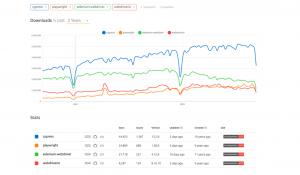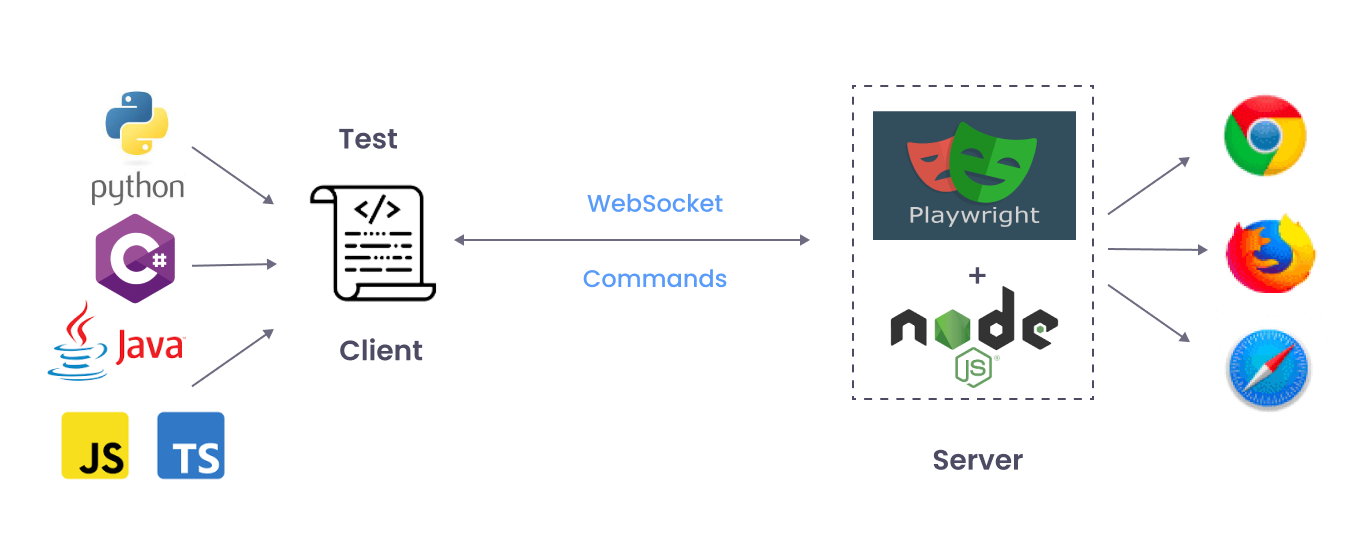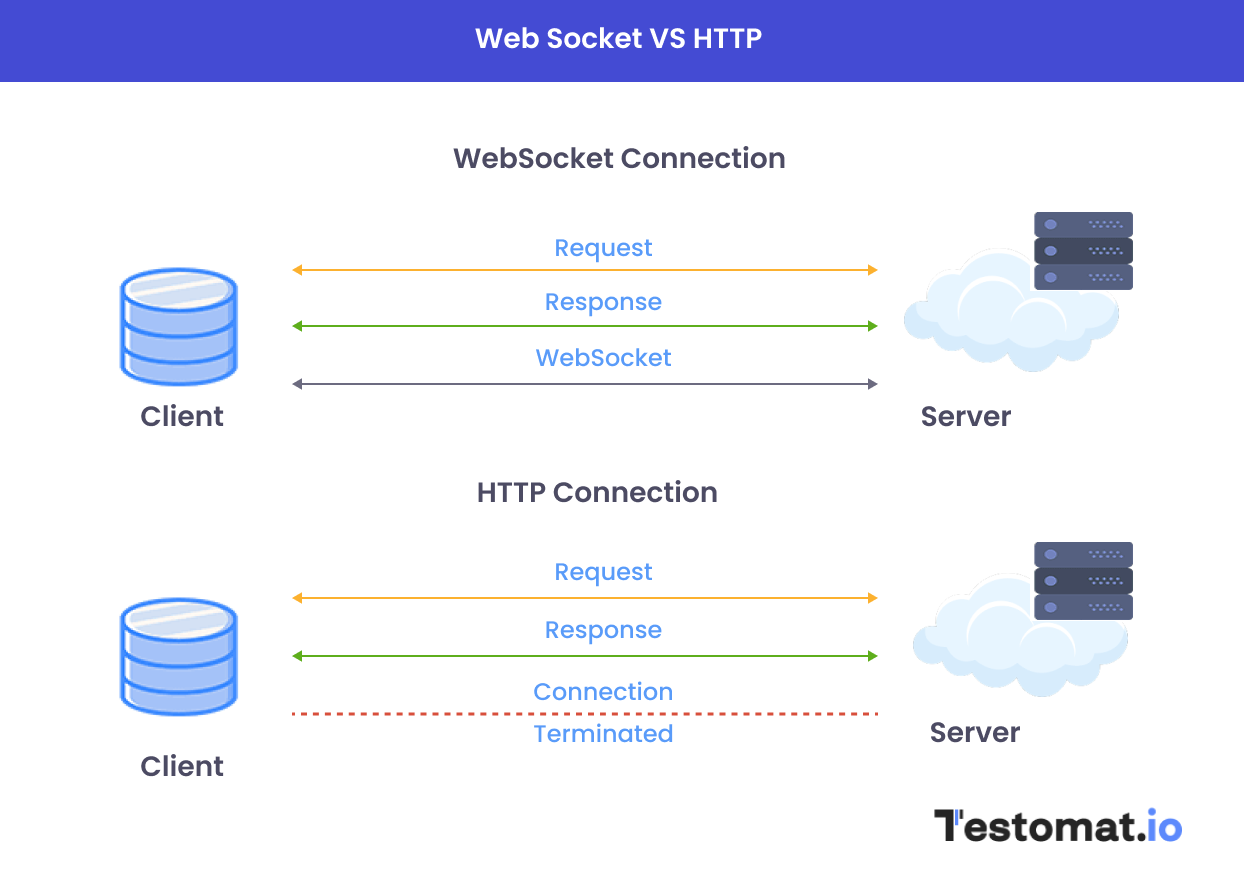For many years, the well-established Selenium framework has been used for end-to-end testing of web apps. However, many software testing professionals consider it somewhat outdated. It lags behind modern tools in terms of speed, efficiency, and performance, lacks support for some necessary features (such as automatic waiting), requires the involvement of third-party services to generate reports, and has several other shortcomings. As a result, automation engineers prefer playwright testing.

Testing frameworks trends Source
Playwright is one of the popular frameworks that has already gained immense popularity despite its recent entry into the market. You can see it with the statistic on top. Playwright testing has quickly become a preferred choice among developers and testers for its robust features and efficient automation capabilities.
What is Playwright? Key Features of the Tool
Playwright is an open-source Node.js library that enables efficient E2E testing of web apps, making Playwright automation a key player in modern software testing.

Illustration describes How Playwright works
Playwright was created by Microsoft in 2020 but has already found its enthusiasts: when preparing this article, the framework had 54.7k stars and 3k forks on GitHub. You can find detailed documentation on the same platform that will make it easier to start with the tool.
Playwright meets most of the needs of modern Agile teams thanks to its key features:
- Cross-browser Compatibility. With Playwright, automation is possible for all modern browsers, including the Chromium family (Chrome and Edge), Firefox, and Webkit (Safari).
- Cross-platform Capability. The framework allows tests to be run locally, on CI, and on different platforms: Windows, Linux, and macOS.
- Multilingual Support. The tool eliminates the need for the automation engineer to be tied to a specific programming language. It lets you write tests in TypeScript, JavaScript, Python, .NET, C#, and Java. All about supported Playwright languages in Docs

Explanation of network architecture and protocols within a Playwright tool
This framework guarantees high testing efficiency for web applications by modeling real user scenarios and other progressive features. We will discuss them further. We will discuss them further, including how to implement them using npx playwright test.
Functions of Playwright Testing That Make It the Best Choice for Web Testing
In the modern world of software development, there are numerous testing automation tools, but not all offer users the extensive functionality that Playwright does. The framework boasts the following progressive features:
- Codegen: This feature allows you to create tests by recording every user action. Importantly, you can write such tests in any supported programming language.
- Playwright inspector: With this feature, you can step-by-step monitor test execution, create selectors, view click points, and much more.
- Trace Viewer: This tool makes it easy to understand why a test failed and debug it. With it, you can access the recordings of your Playwright tests, enabling you to navigate from one action to another and see what happened during each of them.
- Automatic Waiting: One of the key features of Playwright automation which sets it head and shoulders above more traditional alternatives like Selenium. This feature involves Playwright waiting for elements to be ready before executing any action. This helps eliminate a significant problem faced by testers – unstable tests. The effectiveness of this feature is evident in improved test results and overall testing reliability.
- Test Tagging: With this feature, users can group and run test cases together.
- Built-in Reports: Reporting on test results plays a crucial role in the QA process. Playwright comes with various default reporters, including List, Line, Dot, HTML, JSON, and JUnit. Additionally, the framework allows the creation of custom reports and supports integration with third-party reporters such as Allure, Monocart, Tesults, ReportPortal, Currents, and Serenity/JS.
- Video and Screenshot Support: The framework provides the capability to use photos and video recordings of test results, enabling QA automation engineers to quickly identify issues through Playwright automation.
- Test Retries: This feature automatically retries failed tests, which is especially useful for tests prone to occasional failures.
- Parallel Test Execution: The tool supports parallel test execution by running multiple worker processes simultaneously. Moreover, Playwright can achieve even greater test parallelization by running tests on different machines.
- Browser Context Creation: The tool supports running tests in isolated browser contexts. Creating these elements takes a few milliseconds, significantly faster than launching a new browser. This is another reason why testing with Playwright Test is known for its high speed.
All these features make Playwright the preferred framework for many testers looking to automate end-to-end testing of web applications. Next, let’s discuss the advantages for teams that use this framework.
Why Choose Playwright as the Primary Framework for Your Project?
The framework’s creators have made every effort to make it as versatile as possible, allowing teams to use it regardless of project specifics. With Playwright, you’ll gain a range of advantages:
- Variety of Devices for Testing: The framework supports testing in different browsers and running tests on emulators. You can emulate any real device, including phones or tablets; in this case, it refers to emulating Google Chrome for Android and Mobile Safari.
- Extensive Integration Capabilities: The framework enables test execution on CI/CD thanks to its integration support with top tools, including GitHub Actions, Azure Pipelines, CircleCI, Jenkins, and GitLab. Its capabilities go beyond this, as Playwright supports working with popular test runners like AVA, Jest, Jasmine, and Mocha, as well as integration with Online Selenium Grid for parallel execution of large test suites.
- Support for Various Types of Testing: With this framework, you can run functional, end-to-end tests and perform API testing.
- Ability to Handle Different Test Scenarios: Some test scenarios involve opening new browser windows or tabs. Playwright supports this capability, allowing interaction with multi-page websites just like a real user.
Despite being a relatively new framework with room for further development, Playwright outperforms many familiar but outdated tools, and its shortcomings are relative. For instance, its lack of a large community is compensated for Playwright Test by comprehensive documentation.
While it may not be possible to use real mobile devices for testing within the framework, it can create highly realistic emulators. Therefore, consider this framework if you’re dealing with end-to-end web application testing. Make use of npx playwright test to effectively automate and verify your web applications across different environments.
Potential of Playwright with test management
Considering the growing popularity of this tool, the Testomat.io team has implemented the capability to work with Playwright test cases in TMS through seamless integration with the framework. The extensive capabilities of the test management system and the straightforward setting up will enable teams to enhance the efficiency of their QA processes.
Now, you can proceed to initiate testing. The Testomat.io system allows you to:
- Import tests from the framework in just one click. To do this, create a new project in TMS and select “Import Project from Source Code” from the menu.
- Keep tests up to date. Testomat.io will monitor changes in test cases and notify you by assigning the “Out of Sync” status to such tests.
- Run manual and automated testing in one place. In addition to importing auto tests from Playwright, you can create test cases for manual testing in TMS.
- Structure Playwright tests. Testomat.io offers sorting, filtering, changing the order, and searching for specific tests. You can also utilize the tagging and labeling system.
- Generate detailed reports. Users of the test management system have access to real-time reports and post-test run reporting.
- Run Playwright tests on CI/CD. This is possible thanks to the integration support between TMS and leading CI/CD tools like Bamboo, GitHub, Jenkins, GitLab, etc.
No matter which test automation tool you use, the testomat.io system will help optimize your QA processes. With its assistance, close collaboration within the team becomes possible, and you can create high-quality digital solutions, reduce release time, and save project budgets through early error detection. Playwright testing ensures efficient and reliable automation, further enhancing your QA efforts.
Follow this link to see the Illustrated guide on how Playwright communicates with the browser and learn more about using Promise in Playwright tests.
Bottom Line Playwright Testing
Playwright is a modern multi-language framework widely used in the world of software development for automating E2E and other types of web application testing. It allows for minimizing the number of unstable tests, improving testing accuracy, speeding up the QA process, and ensuring high functionality and performance of the developed products. Understanding what is Playwright and its capabilities is crucial for teams looking to enhance their testing strategies. Utilizing npx playwright test simplifies test execution and management, further enhancing testing efficiency.
The test management system, Testomat.io, enables the optimization of working with Playwright tests, making testing even more efficient and making test reading and their results understandable even for non-technical professionals. In case of test failure, Testomat.io provides clear and actionable insights, helping teams swiftly identify and resolve issues to maintain project momentum and quality assurance standards.
We hope this article helps you in choosing an automation tool. Do you have any questions about what is Playwright or its integration? Feel free to reach out; our company’s specialists will happily answer any of them. Playwright testing provides robust solutions for automating web application testing, ensuring reliability and efficiency in your testing processes.







